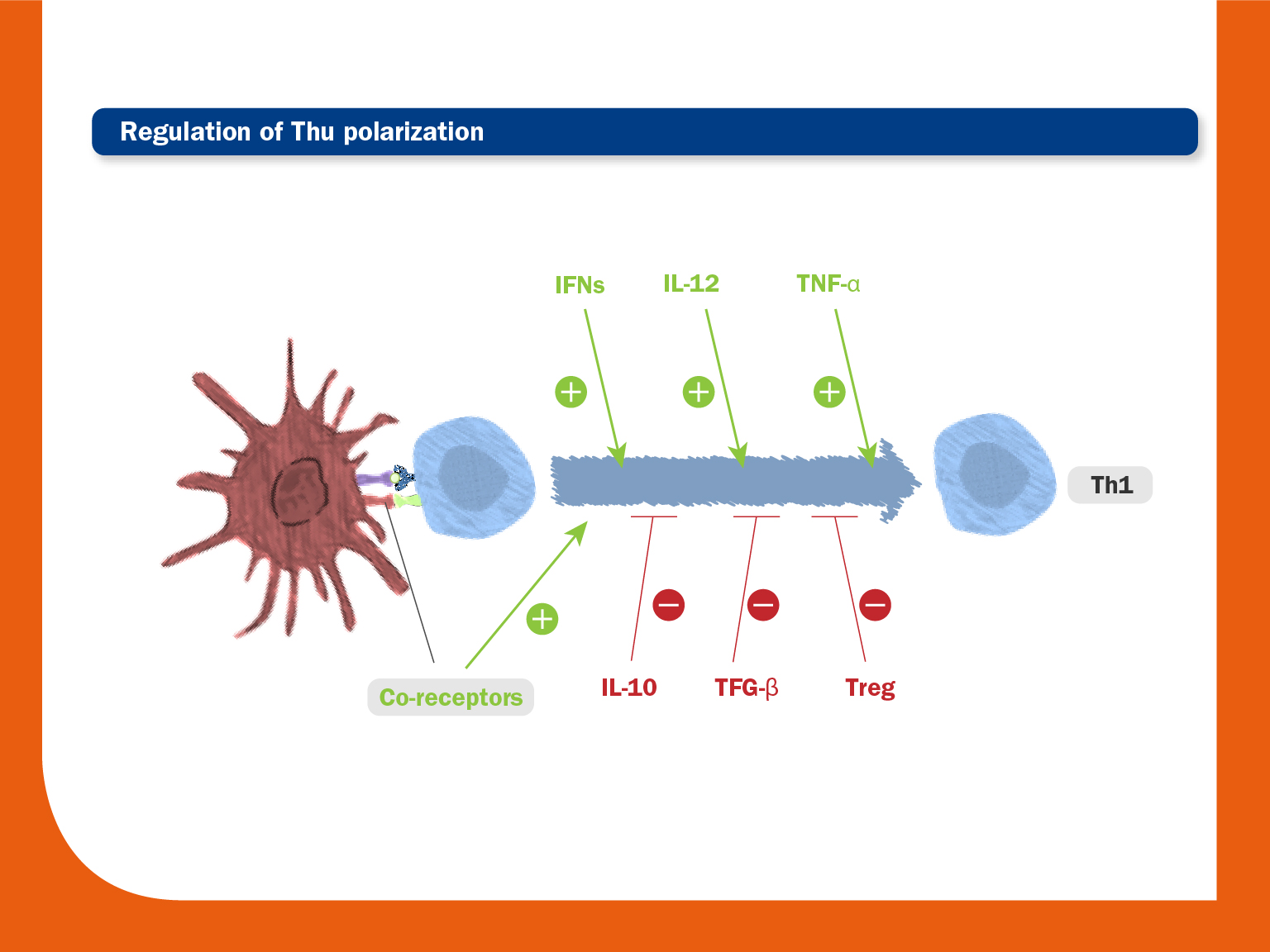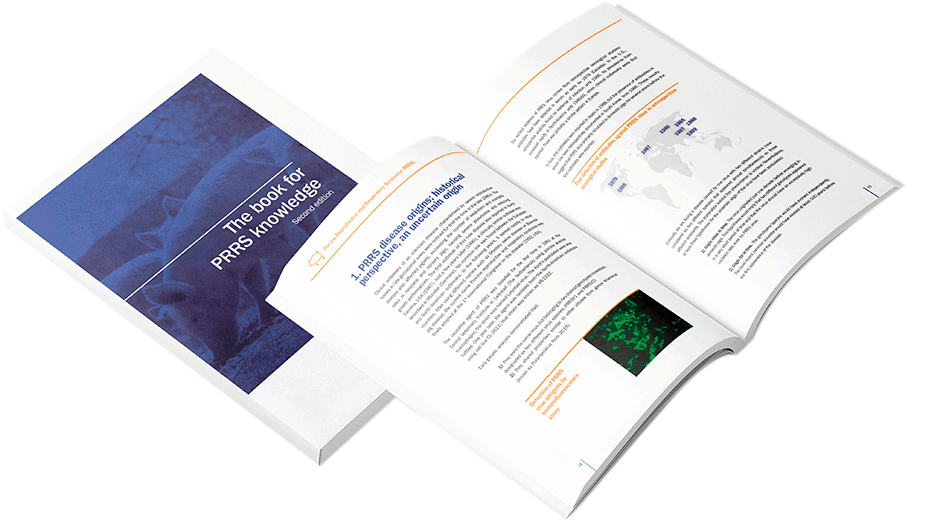Several hypotheses have been proposed to explain this phenomenon:
- Impairment or enhancement of some cytokines:
Impairment of some cytokines such as IFN-α or TNF-α can affect the development of an effective Th1 immune response. Also, the induction of IL-10 by PRRS virus may negatively regulate the cell responses. - Interference with correct antigen presentation and activation of T lymphocytes:
The PRRS virus down-regulation of given cytokines or of immunologically relevant cell-surface molecules during antigen presentation can affect the development of effective cell responses. - Presence of T regulatory (Treg) cells:
As seen before, the major function of Treg cells is to down-regulate immune responses. It has been demonstrated that several viruses evade host immunity by promoting Treg and/or the secretion of immunosuppressive cytokines IL-10 and TGF-β.
After a PRRSV2 infection, these cells have been consistently observed in lymphoid tissues related to a strong TGF-β production.
However, no clear evidences exist about a positive correlation between the length of viremia and the development of Treg cells. N protein could be involved in the upregulation of the frequency of Treg. Differences regarding the ability to generate Tregs could exist among PRRS virus isolates. - Genetic variability:
Similarly to NAs, continuous creation of escape mutants could prevent the correct development of cell-mediated immunity.




